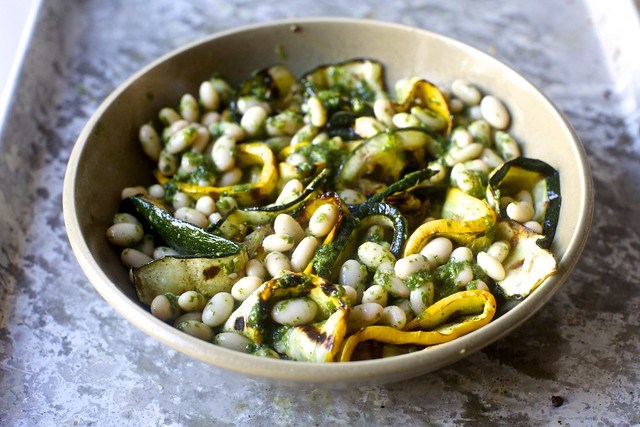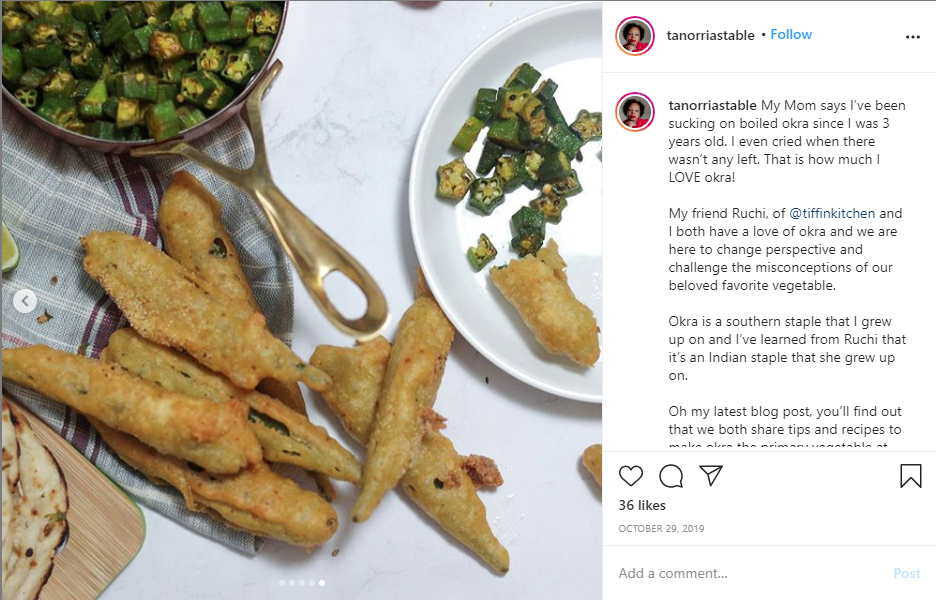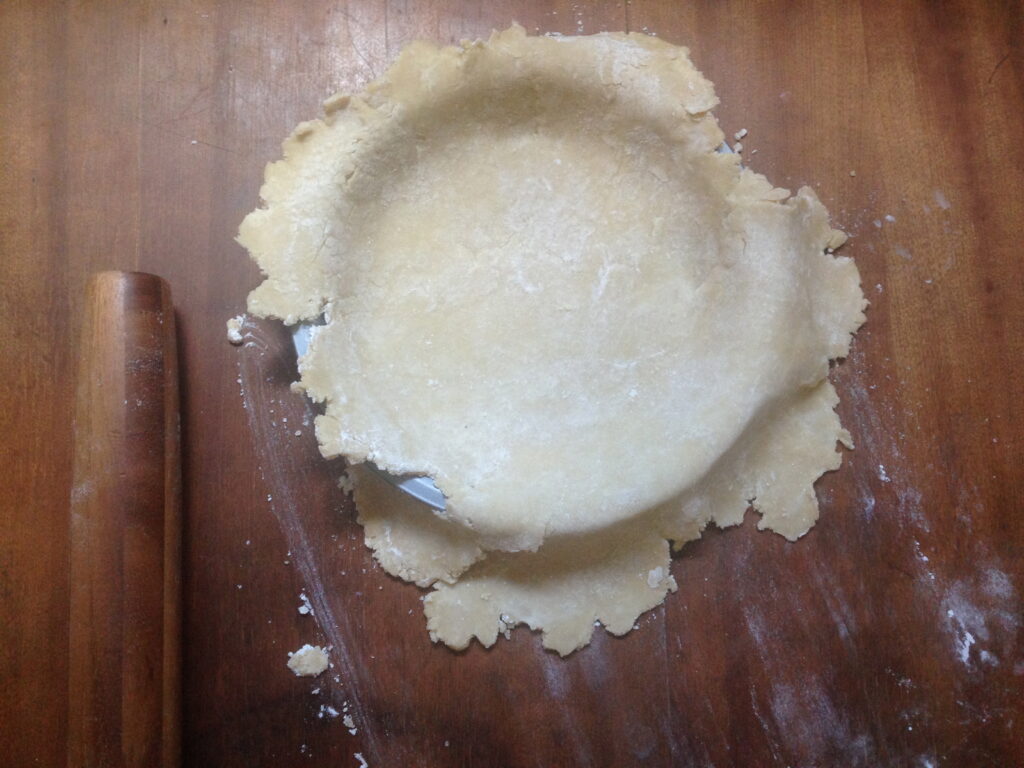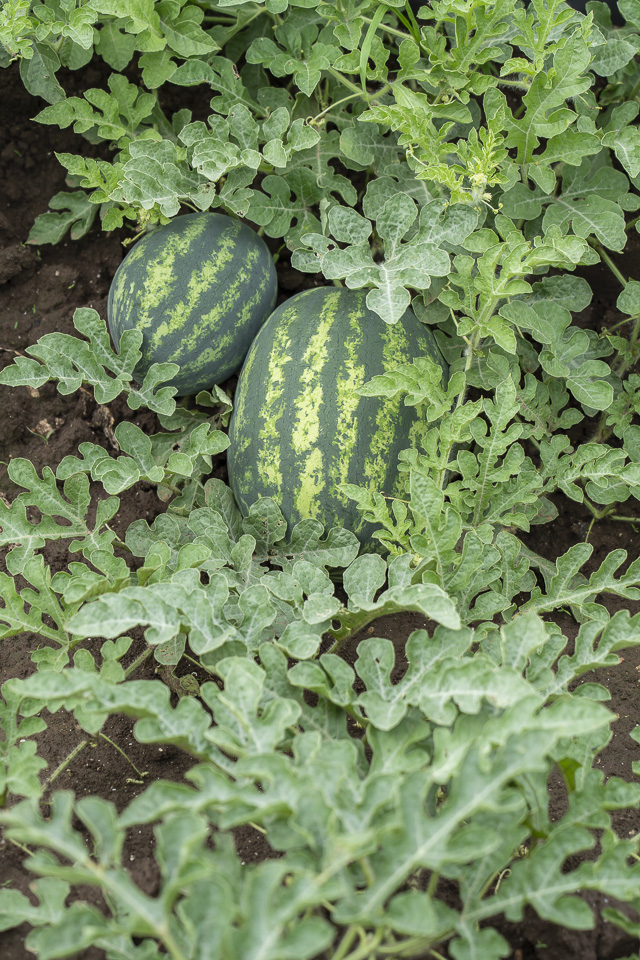
WHAT TO COOK (AND REMEMBER) THIS FOURTH OF JULY
07/03/20 — Ada Broussard
This July 4th is one that we will all likely remember. You’re likely spending the day with a small group, maybe even just your immediate family or chosen quaranteam. Austin parks are closed, bars shuddered, and many parties canceled. But, you’ve still got to eat, no? Our vegetables certainly are still growing, and despite the circumstances of this year’s Independence Day, they beg to be piled high on platters and maybe thrown on the grill.
To keep your weekend simple, we’re going to go ahead and suggest some side dishes for you. What better day to acknowledge this holiday than with dishes that help us remember our country’s past, and look forward with hope and motivation for its future?
This July 4th, cook the summer classics: Squash, Okra, Tomates, and Watermelon.
![]() Who needs a blueberry pie when you can make a tomato one? Photo by Rick Cortez.
Who needs a blueberry pie when you can make a tomato one? Photo by Rick Cortez.
SQUASH: Squash, along with beans and corn, was one of the earliest domesticated crops in the Americas. The three crops together are known as the Three Sisters, but it’s noteworthy that the consumption and domestication of squash likely came first! The earliest evidence of squash cultivation in what is now the United States ranges from 5,000-8,000 years ago, beginning on the east coast but then eventually spreading far and wide across North America making squash (and gourds and pumpkins) an important staple food for indigenous peoples all across the Americas. Squash is easy to germinate and grows effortlessly. It’s deep roots in North America no doubt make it an obvious choice for a summer celebration.
How to enjoy squash this year: Grill your squash over a hot fire, and top with basil: either finely chopped, blended into a pesto, or infused into oil. This Smitten Kitchen recipe is a wonderful starting point. For a heartier dish, she adds white beans and makes a grilled squash and pesto bean salad.
![]() Photo taken from the Smitten Kitchen website. Recipe linked!
Photo taken from the Smitten Kitchen website. Recipe linked!
OKRA Okra arrived in the United States with enslaved West Africans, brought to the new world as food for enslaved people to eat along the passage. Once landed, many of the enslaved planted and cultivated okra in small gardens as a means to supplement the meager rations provided by slave owners. Okra, therefore, became an important source of sustenance, as well as culinary tradition, for many slaves in the Southern United States. Like history itself, the use and popularity of okra expanded and evolved with time. The tropical plant grows well in hot summers and has become a cornerstone of Southern food traditions. Prepare your okra with a healthy dose of introspection and celebration of Black cooking traditions and its impact on Southern foodways.
How to enjoy okra this year: Fry it, of course! Here is one of our favorite fried okra recipes by Tanorria Askew. Tanorria takes her grandmother’s fried okra recipe and adds her Master Chef touch.
![]() Fried okra recipe and photo courtesy of Tannori Askew's Instagram.
Fried okra recipe and photo courtesy of Tannori Askew's Instagram.
TOMATOES Tomato plants are actually native to Central America, and before domestication, the tomato plant grew like wild vines in these tropical regions bearing tiny and very acidic fruit. The Aztec people consumed the tiny fruit for centuries. When Europeans encountered tomatoes in the Americas, they brought the fruit and see back home. Interestingly, many Europeans feared the tomato and considered it poisonous (even nicknaming in the “poison apple” for hundreds of years. Many Europeans were eating on pewter plates and pewter flatware which contained high amounts of lead. Because of tomatoes’ acidity, the fruit would leach lead from the plates, often killing the diners. Of course, those eating off of wooden plates with wooden wares didn’t experience this problem, and tomatoes slowly and surly became a beloved fruit of poorer families, specifically in parts of Spain as well as in Naples, Italy, where pizza was born. The skepticism of the tomatoes carried over to European colonists, though there were rural gardeners who embraced the fruit. It wasn’t until the Civil War that the tomato because a commonplace vegetable. Tomato canneries boomed during this period, and tomatoes’ ability to be preserved this way made them a staple food for the Union army. Enjoy a tomato this holiday, and honor the battles we have faced, and continue to face, to achieve the American ideal.
How to enjoy tomatoes this year: Make a pie. Sure, blueberry pie and peach cobbler are traditional 4th of July foods. But why not make a savory, tomato pie? Here is our favorite tomato pie recipe and here is a tomato galette (or rustic pie) recipe, both from the JBG archives. (P.S. We just counted, and this year we have sold 18,000 lbs. of tomatoes through our Bulk Sale! We still have slicer and cherry tomato varieties available, but the sale will end soon. Order here if you want tomato pies for days!)
![]() Tomato pie crust. Recipe linked above. Photo by Megan Russel.
Tomato pie crust. Recipe linked above. Photo by Megan Russel.
WATERMELON The average high temperature in Austin on the 4th of July is 95 degrees. Each bite of a watermelon is about 91% water (and 6% sugar). Is there any better fruit to enjoy on the Fourth of July? Unfortunately, the enjoyment of a watermelon isn’t as straightforward of delight for Black Americas because the fruit has long been used as a racist trope. This Atlantic article tells the story, “...the stereotype that African Americans are excessively fond of watermelon emerged for a specific historical reason and served a specific political purpose. The trope came in full force when slaves won their emancipation during the Civil War. Free black people grew, ate, and sold watermelons, and in doing so made the fruit a symbol of their freedom. Southern whites, threatened by blacks’ newfound freedom, responded by making the fruit a symbol of black people’s perceived uncleanliness, laziness, childishness, and unwanted public presence.”
This Atlantic article tells the full story better than we can, and we encourage you all to give the complete article a read. We don’t point out this complicated facet of watermelon to dissuade you from slicing one up, and in fact, we hope we’re able to do the opposite! Let this sweet and hydrating fruit nourish us this summer and help invigorate our collective desire to create a better country tomorrow that exists today.
How to enjoy watermelon this year: Sliced, with our without salt.
As always, thank you for reading and thank you for being such a wonderful community for us to farm in. Your support makes the 100 degree days worth it!
![]() Watermelons waiting in the field. Photo by Scott David Gordon.
Watermelons waiting in the field. Photo by Scott David Gordon.
To keep your weekend simple, we’re going to go ahead and suggest some side dishes for you. What better day to acknowledge this holiday than with dishes that help us remember our country’s past, and look forward with hope and motivation for its future?
This July 4th, cook the summer classics: Squash, Okra, Tomates, and Watermelon.
 Who needs a blueberry pie when you can make a tomato one? Photo by Rick Cortez.
Who needs a blueberry pie when you can make a tomato one? Photo by Rick Cortez.
SQUASH: Squash, along with beans and corn, was one of the earliest domesticated crops in the Americas. The three crops together are known as the Three Sisters, but it’s noteworthy that the consumption and domestication of squash likely came first! The earliest evidence of squash cultivation in what is now the United States ranges from 5,000-8,000 years ago, beginning on the east coast but then eventually spreading far and wide across North America making squash (and gourds and pumpkins) an important staple food for indigenous peoples all across the Americas. Squash is easy to germinate and grows effortlessly. It’s deep roots in North America no doubt make it an obvious choice for a summer celebration.
How to enjoy squash this year: Grill your squash over a hot fire, and top with basil: either finely chopped, blended into a pesto, or infused into oil. This Smitten Kitchen recipe is a wonderful starting point. For a heartier dish, she adds white beans and makes a grilled squash and pesto bean salad.
 Photo taken from the Smitten Kitchen website. Recipe linked!
Photo taken from the Smitten Kitchen website. Recipe linked!
OKRA Okra arrived in the United States with enslaved West Africans, brought to the new world as food for enslaved people to eat along the passage. Once landed, many of the enslaved planted and cultivated okra in small gardens as a means to supplement the meager rations provided by slave owners. Okra, therefore, became an important source of sustenance, as well as culinary tradition, for many slaves in the Southern United States. Like history itself, the use and popularity of okra expanded and evolved with time. The tropical plant grows well in hot summers and has become a cornerstone of Southern food traditions. Prepare your okra with a healthy dose of introspection and celebration of Black cooking traditions and its impact on Southern foodways.
How to enjoy okra this year: Fry it, of course! Here is one of our favorite fried okra recipes by Tanorria Askew. Tanorria takes her grandmother’s fried okra recipe and adds her Master Chef touch.
 Fried okra recipe and photo courtesy of Tannori Askew's Instagram.
Fried okra recipe and photo courtesy of Tannori Askew's Instagram.
TOMATOES Tomato plants are actually native to Central America, and before domestication, the tomato plant grew like wild vines in these tropical regions bearing tiny and very acidic fruit. The Aztec people consumed the tiny fruit for centuries. When Europeans encountered tomatoes in the Americas, they brought the fruit and see back home. Interestingly, many Europeans feared the tomato and considered it poisonous (even nicknaming in the “poison apple” for hundreds of years. Many Europeans were eating on pewter plates and pewter flatware which contained high amounts of lead. Because of tomatoes’ acidity, the fruit would leach lead from the plates, often killing the diners. Of course, those eating off of wooden plates with wooden wares didn’t experience this problem, and tomatoes slowly and surly became a beloved fruit of poorer families, specifically in parts of Spain as well as in Naples, Italy, where pizza was born. The skepticism of the tomatoes carried over to European colonists, though there were rural gardeners who embraced the fruit. It wasn’t until the Civil War that the tomato because a commonplace vegetable. Tomato canneries boomed during this period, and tomatoes’ ability to be preserved this way made them a staple food for the Union army. Enjoy a tomato this holiday, and honor the battles we have faced, and continue to face, to achieve the American ideal.
How to enjoy tomatoes this year: Make a pie. Sure, blueberry pie and peach cobbler are traditional 4th of July foods. But why not make a savory, tomato pie? Here is our favorite tomato pie recipe and here is a tomato galette (or rustic pie) recipe, both from the JBG archives. (P.S. We just counted, and this year we have sold 18,000 lbs. of tomatoes through our Bulk Sale! We still have slicer and cherry tomato varieties available, but the sale will end soon. Order here if you want tomato pies for days!)
 Tomato pie crust. Recipe linked above. Photo by Megan Russel.
Tomato pie crust. Recipe linked above. Photo by Megan Russel.
WATERMELON The average high temperature in Austin on the 4th of July is 95 degrees. Each bite of a watermelon is about 91% water (and 6% sugar). Is there any better fruit to enjoy on the Fourth of July? Unfortunately, the enjoyment of a watermelon isn’t as straightforward of delight for Black Americas because the fruit has long been used as a racist trope. This Atlantic article tells the story, “...the stereotype that African Americans are excessively fond of watermelon emerged for a specific historical reason and served a specific political purpose. The trope came in full force when slaves won their emancipation during the Civil War. Free black people grew, ate, and sold watermelons, and in doing so made the fruit a symbol of their freedom. Southern whites, threatened by blacks’ newfound freedom, responded by making the fruit a symbol of black people’s perceived uncleanliness, laziness, childishness, and unwanted public presence.”
This Atlantic article tells the full story better than we can, and we encourage you all to give the complete article a read. We don’t point out this complicated facet of watermelon to dissuade you from slicing one up, and in fact, we hope we’re able to do the opposite! Let this sweet and hydrating fruit nourish us this summer and help invigorate our collective desire to create a better country tomorrow that exists today.
How to enjoy watermelon this year: Sliced, with our without salt.
As always, thank you for reading and thank you for being such a wonderful community for us to farm in. Your support makes the 100 degree days worth it!
 Watermelons waiting in the field. Photo by Scott David Gordon.
Watermelons waiting in the field. Photo by Scott David Gordon.





 0 ITEMS IN CART
0 ITEMS IN CART 

